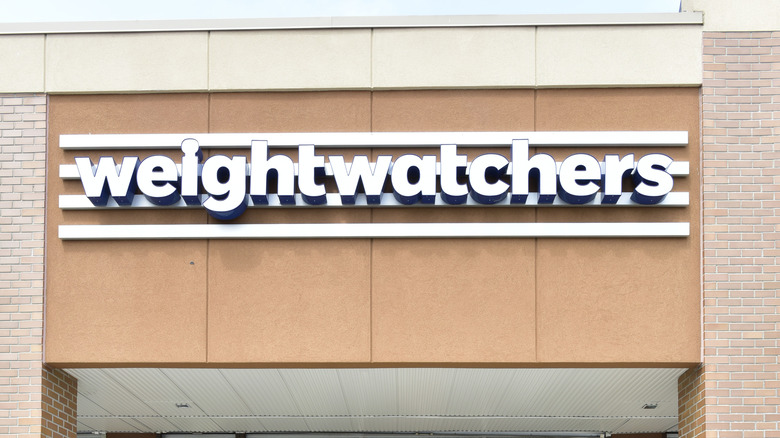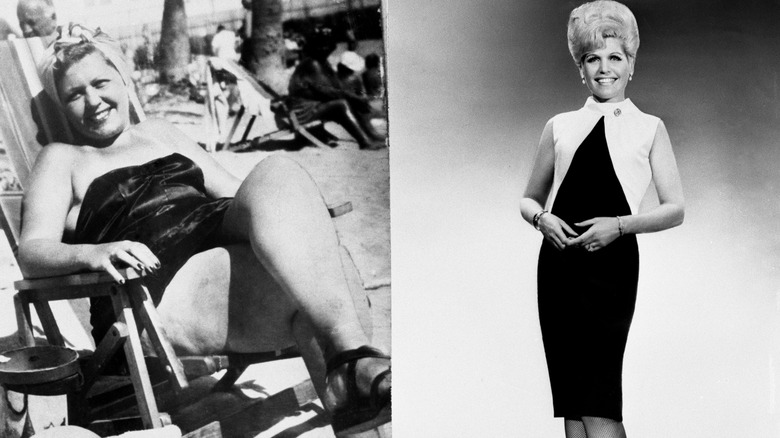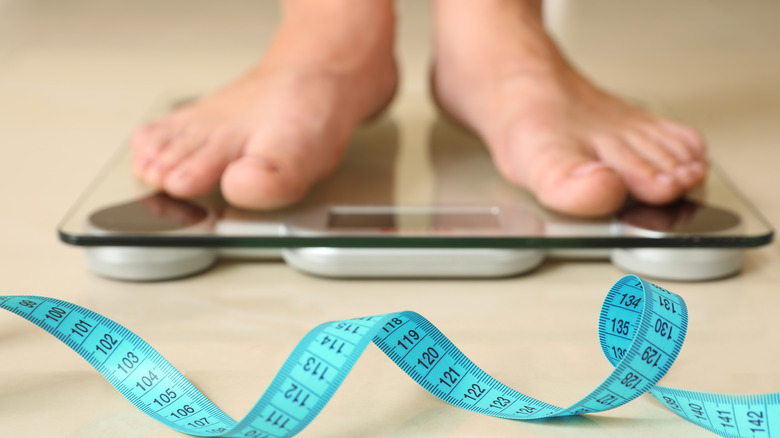The Truth About Weight Watchers
Weight Watchers has been rebranded and is working on repositioning themselves as a new entity: WW International. WW, previously a familiar acronym for Weight Watchers, is now linked to their tagline: Wellness That Works.
WW's goal? To inspire healthy habits beyond those related to weight management. Sure, the company's foundation is still their weight loss and wellness program, combining nutritional and behavior science with digital, in-person, and virtual workshops. But members will also work on their well-being while they work on their waistline, which is right on trend with self-love and self-acceptance.
As of this writing, 4.7 million people subscribe to the WW program. The brand will continue to get input from their powerhouse spokesperson, Oprah Winfrey. Oprah has extended her partnership with WW through 2025. Star power is a strength for WW. Other celebrities representing the brand as ambassadors include Kate Hudson, Ciara, and Daphne Oz. However, there's more to WW than their spokespeople. Here's a look at the truth about the brand.
The founder of Weight Watchers was personally motivated to lose weight
Weight Watchers was founded by a 40-year-old homemaker from Brooklyn, NY, named Jean Nidetch, according to Lifetime. Nidetch had struggled with her weight since childhood. She wrote in her memoir, The Story of Weight Watchers, "Whenever I cried, my mother gave me something to eat" (via WBUR).
One fateful day in 1961, a neighbor at the supermarket asked Nidetch when she was due, thinking she was pregnant. That interaction was the catalyst that moved Nidetch to try something new for herself: combining dieting with group support (via PBS). Her efforts helped her lose 72 pounds. The following year, she established Weight Watchers, complete with program rules and leaders for group discussions.
"[Nidetch] got this big idea that the secret to weight loss was other people and that community was essential to the dieter, to show that fat people weren't lonely and lacking in friends and also that they had things to tell each other and to learn from each other," Marisa Meltzer, author of This is Big: How the Founder of Weight Watchers Changed the World and Me, said in an interview with NPR.
The Weight Watchers program has been proven to work for weight loss
WW (formerly known as Weight Watchers) is one of the most researched weight loss programs out there (via WebMD). According to a 2015 Johns Hopkins Medicine study intended to help physicians guide patients to an effective weight loss program, participants on Weight Watchers had greater weight loss than non-participants. WW ranks number one in U.S. News & World Reports' Best Weight-Loss Diets and Best Commercial Diet Plans, and number four in Best Diets Overall.
A 2011 study funded by Weight Watchers through a grant to the UK Medical Research Council showed that weight loss programs that offer regular weigh-ins (a component of the WW program), group support, and advice lead to better results. Dr. Susan Jebb, lead author of the study, told ABC News, "It's having a weekly weigh-in and support that seems to work. People are more likely to stick at it."
WW International has so much scientific power behind it, it has given the program its own science center for any members looking for more on how the program has been evaluated.
WW is about counting points not calories
Not all calories are created equal. If you have a snack budget of 100 calories, for example, and you are starving, you could choose two chocolate chip cookies or three clementines, 21 unsalted mini pretzels or one banana, 33 seedless grapes or 1 small baked potato, et cetera. Of course, pretzels or cookies aren't going to keep you full in the same way as a banana or clementines.
That kind of mental work is behind WW's point-based programming, according to Medical News Today. WW assigns a point value to the foods we eat — some foods have a high point value, like desserts and sweet treats, and some have a low point value, like fresh fruits and vegetables (many of the latter are even zero points). The point system provides a short-hand way of encouraging members to consider nutrient-rich foods — which fill you up and pack a healthy punch — instead of those with what's commonly known as empty calories.
Each day, instead of counting calories, members count points toward their daily allotment. How many points you have is "based on your age, height, weight, and sex to ensure that you reach your weight-loss goals," according to WW. This SmartPoints system also allows members a weekly allotment, providing more flexibility than former Weight Watchers plans.
Weight Watchers did more than change its name
WW has long linked food and activity to help members achieve success — and the combination of behavioral changes around eating less and moving more has helped millions. But now, WW is taking a holistic look at health, factoring in a healthy mindset and sleep habits to the mix of what makes members successful, according to The Wall Street Journal.
In November 2020, WW launched a new program, myWW+, which is designed to help members reduce stress and improve sleep, Fox Business explained. The foundation of the program is still healthy eating and increased activity, but now developing a mindfulness practice and tracking sleep patterns and behaviors are a part of the equation.
In partnership with Headspace to provide curated, guided meditations, WW is also providing mental health content to provide positive psychology tips and deliver cognitive-behavioral therapy tools to members. And because of the connection between sleep and weight (research has shown that losing sleep while dieting reduces weight loss), WW has added bedtime reminders, stretches, and meditations to their offerings.
A WW membership has its advantages
The overt benefits of the WW program are undisputed: online support in the form of dietary advice, dieting tools, a database of food/recipes, fitness videos and workout routines (via Healthline). But it's the lesser known psychological advantages of the program that let the true benefits of membership shine.
Members of the WW program are prompted to weigh in weekly. Those weekly weigh-ins are one of the main reasons a program like WW works: It Holds you accountable for your weight loss. "People tend to perform much better when they are held accountable, or when they are part of a peer group doing the same thing," Dr. Alex Dimitriu, psychologist and sleep specialist, told Health Digest.
Members also enjoy a sense of community — the feeling that you are not alone in your weight loss journey. "Humans are social creatures, so the desire to belong, or be a part of the team can have beneficial motivating effects," said Dr. Dimitriu. That socialization is key to members' success. "A group of people all focused on the same goal, with the same state of mind, serves as a psychological boost," Dr. Kecia Gaither, director of perinatal services at NYC Health + Hospitals/Lincoln, told Health Digest.
WW encourages behavioral changes
Research, like one 2012 study published in the Journal of Obesity, has shown that there are certain behaviors that lead to obesity. These include, but are not limited to, consuming fast food frequently, eating away from home, consuming large portions, drinking beverages high in sugar, and skipping breakfast. Emotional eating also plays a role in weight gain, a 2018 study published in Nutrition Journal found. Choosing food as a reward, indulging in mindless snacking, and giving into cravings for sweets, like chocolate, can contribute to being overweight.
"Dieting alone is part of a much more complex system," Dr. Alex Dimitriu, psychologist and sleep specialist, told Health Digest. "Behavioral change, with the aim of overall health and sustainability, can lead to much better outcomes." That bodes well for WW, as it offers training and tools to help people change behaviors associated with weight gain (via WeightWatchers.com). In meetings and provided online content, they teach members to make mindful nutritional and meal choices, manage stress and other emotions without a reliance on food for comfort, and put yourself first as you become more confident and assertive in meeting your needs.
People lose more weight if on the WW program for a year
One of the reasons Weight Watchers and now WW is successful is the long-term commitment members make to weight loss and dietary change. The average person can expect to lose 1-2 pounds a week on WW, per the company's site, which means it's not a quick fix or rapid weight loss program. It's a program designed to help people make lasting change.
Studies have shown that staying on the program for the long haul works. In one 2012 study from the National Institute of Diabetes and Digestive and Kidney Diseases, not only did people on the Weight Watchers program achieve greater weight loss at 48 weeks compared to the control group, they achieved at least a 10 percent weight loss over their starting weight.
This study compliments research funded by Weight Watchers and the UK's National Prevention Research Initiative, stating that a 52-week program produces greater weight loss than a 12-week one. So while fad diets and promises of quick success are appealing, the long-term nature of a WW commitment is more likely to help you reach your weight loss goals.
Weight loss success comes at a price, but WW is cheaper than many of its competitors
While paying to lose weight may not be your idea of a good time, you may find the cost of a WW membership to be worth it. As of this writing, WW's digital program is about $3.19 a week (approximately $165 per year), according to WeightWatchers.com. These fees can double or triple once adding other perks, like group coaching via workshops combined with the digital program or personal coaching with a personalized action plan along with the digital program.
Still, these prices are lower compared to other popular program options. Noom's prices begin at approximately $59 per month, Nutrisystem costs approximately $250 to $350 per month, which includes some food, and Jenny Craig costs approximately $390 per month, which includes breakfasts and lunches. Of course, which program, if any, you choose is up to you. As CNet explained, "Ultimately, like with any eating plan, it's about finding what fits best with your personality and budget."
WW-like programs exist (for free)
What would we do without apps? As of mid-2022, there are roughly 3.5 million apps in the Google Play Store and more than 2 million apps in the Apple App Store (via Statista). It's no surprise, then, that WW has their own app. And since Weight Watchers transformed into WW, the company has developed the app to further accommodate the changes they've been making to the program.
For example, while the app still includes popular features, such as food, water and activity trackers, the barcode scanner, and Connect (WW's members-only digital community), it also includes mindset activities and sleep tracking options.
However, it might surprise you that there are alternatives to the WW version that helps people meet their goals in a similar fashion without the cost of a WW plan. The app that most closely mimics the WW app is iTrackBites, an app gaining in popularity, according to Business Insider. The developers offer two versions: the basic free version or the pro version, which is offered at the time of this writing for $59.99 per year – about a third of the cost of an annual WW membership.
You can work with a private coach while on WW
For some people, working with a weight loss coach is the only thing that works for them, otherwise they aren't successful permanently changing unhealthy habits and lost weight returns to plague them once again (via Prevention). Coaches not only act as a sounding board but they provide tools that lead to permanent change, Harvard Business Review explained. However, not everyone has the means (some life coaches charge up to $1,000 month) or the motivation to find or work with a personal coach. Enter: WW's private coaching model.
With the Coaching + Digital Membership Plan, members can pay a weekly fee (beginning at $12.69, as of this writing), to add one-on-one support in the form of consistent check-ins via phone, video, or direct messaging. Even if you don't sign up for that particular plan, there's always a WW coach available to members via chat to help with questions about the program or provide tips and tricks to get them through the day.
You can attend virtual WW meetings
While the events of 2020 created a household name out of Zoom, the opportunity to conduct previously in-person meetings online was one WW grabbed a hold of, according to USA Today. When closing their physical locations amidst lockdown and stay-at-home orders, WW didn't have to let members down, knowing they needed support throughout this stressful time.
The shift to Zoom meant no long lines to weigh in (members can log their weight at home via the app) and unprecedented convenience for those not leaving their homes, the publication explained. And while security is always a worry, the company has added measures to ensure safety, including prescreening members in waiting rooms, where members can also hang out until the workshop begins.
It isn't only the group workshops members are logging on for, though. Those subscribing to the coaching model can also virtually meet one-to-one with their personal weight loss coach (via WeightWatchers.com). The combination of the two — group and 1:1 meetings — has allowed members to stay connected, a key social and emotional need recognized by WW, and part one's holistic wellness.
You can take a quiz to determine what WW plan will work best for you
Ask anyone if they enjoy taking Buzzfeed quizzes and the answer, unless they don't know what those are, is likely to be an astounding "YES!" People like to take assessments because they help them figure out who they are and how the world perceives them (via Insider). And WW has tapped into that emotional need by offering a free assessment and leveraging the results to provide plan customization, another on-trend customer offering, USA Today reported.
Simply download and open the app or visit the related webpage to take the assessment. You're able to take this short quiz without having to log in to or sign up for a WW program. After answering a handful of questions around your nutrition, exercise, sleep, and mental habits, you can enter your email address in to view your results. After your results are tabulated, you can view which program WW recommends for you.
Vegans and vegetarians can join WW
Plant-based diets are growing in popularity. And it's not just vegetarianism that is on the rise. According to Entrepreneur, "Veganism is at an all-high and there is growing acceptance among everyone." Confused about the difference?
According to Healthline, a vegetarian doesn't eat any meat, poultry, game, fish, or shellfish (or any byproducts of animals). A vegan takes it one step further to exclude anything that might exploit an animal for food purposes, so no dairy, eggs, or animal-derived ingredients (like honey or whey).
The good news for these individuals is that there are plenty of vegetarian and vegan options on the WW program. There's even a cookbook specifically designed for members desiring to keep a veggie or vegan diet while on the program. Those who aren't currently vegan or vegetarian might want to consider adopting these dietary lifestyles, or perhaps a flexitarian diet. A 2017 study showed that dieters who go vegetarian lose more weight and improve their metabolism.
You don't have to give up meal kits on WW
One of the best things you can do on the WW program, or really any diet, is make your own meals as opposed to getting fast food or navigating restaurant choices. But sometimes, coming up with a dinner that satisfies your cravings and fits within your point budget poses a challenge. Cue: meal kit delivery services for the win.
The global meal kit delivery market is exploding, expecting to reach $19.92 billion by 2027. Companies like Hello Fresh and Sunbasket make regular people feel like chefs and make mealtime significantly less stressful. And Blue Apron has added the WW "Mark of Wellness" to items on their menu, so users can select WW-approved meals, stay on track with their points, and meet their weight loss goals.
Each meal in the rotation is nutritious: high in vegetables and low in calories, sugar, sodium, and saturated fat. They list the point value (and provide a barcode for easy scanning of the recipe into the app) for easy tracking.















